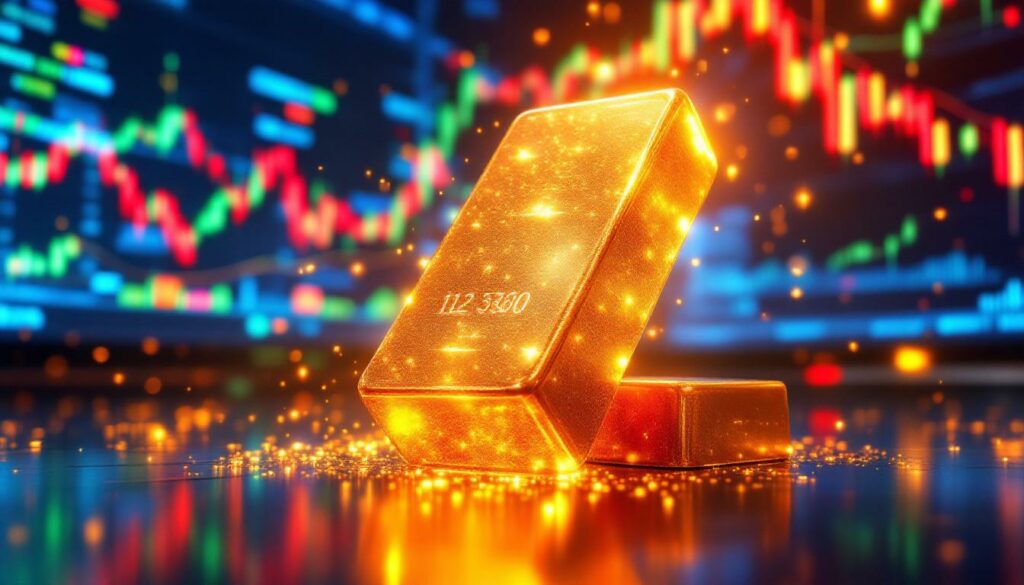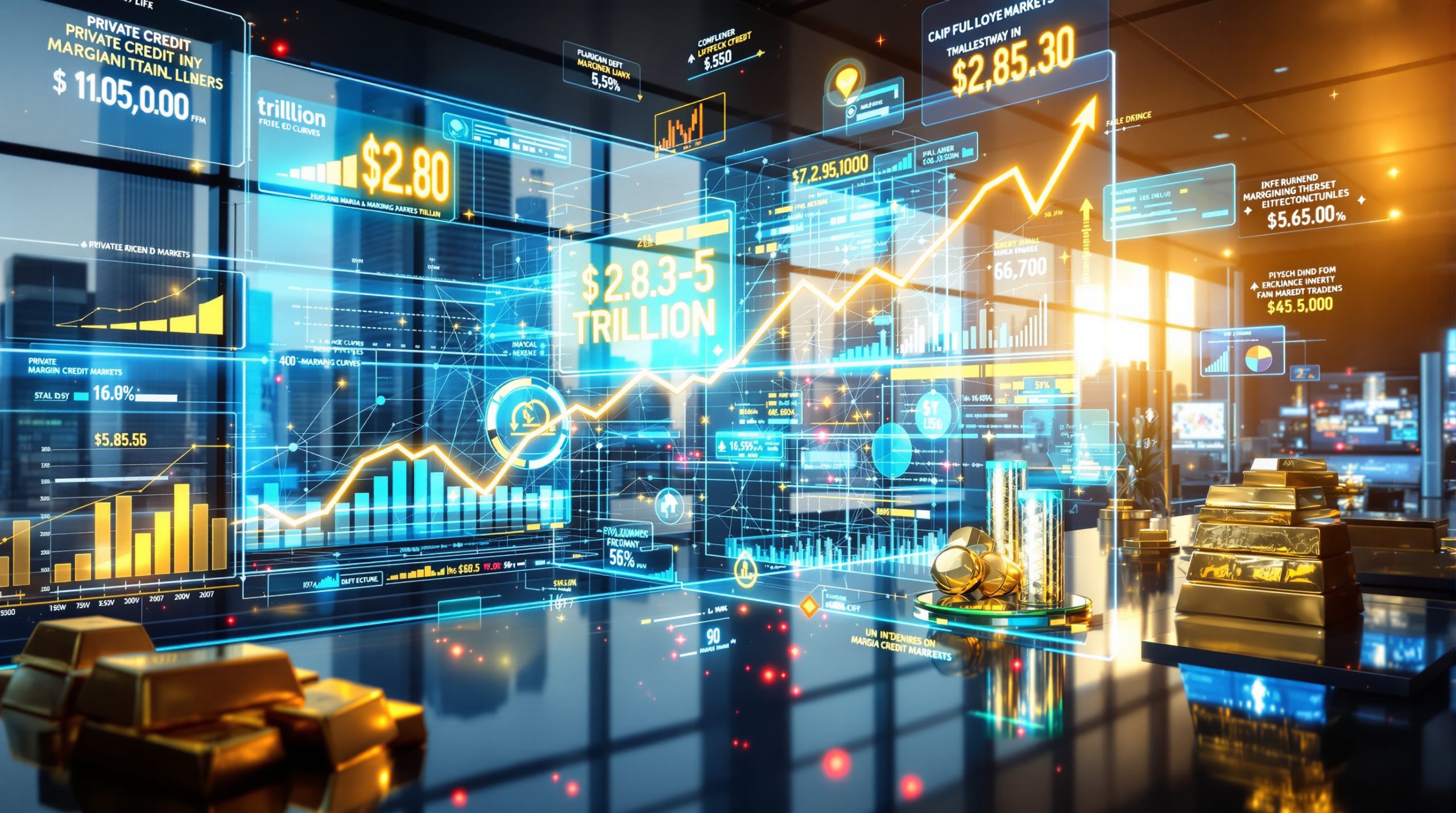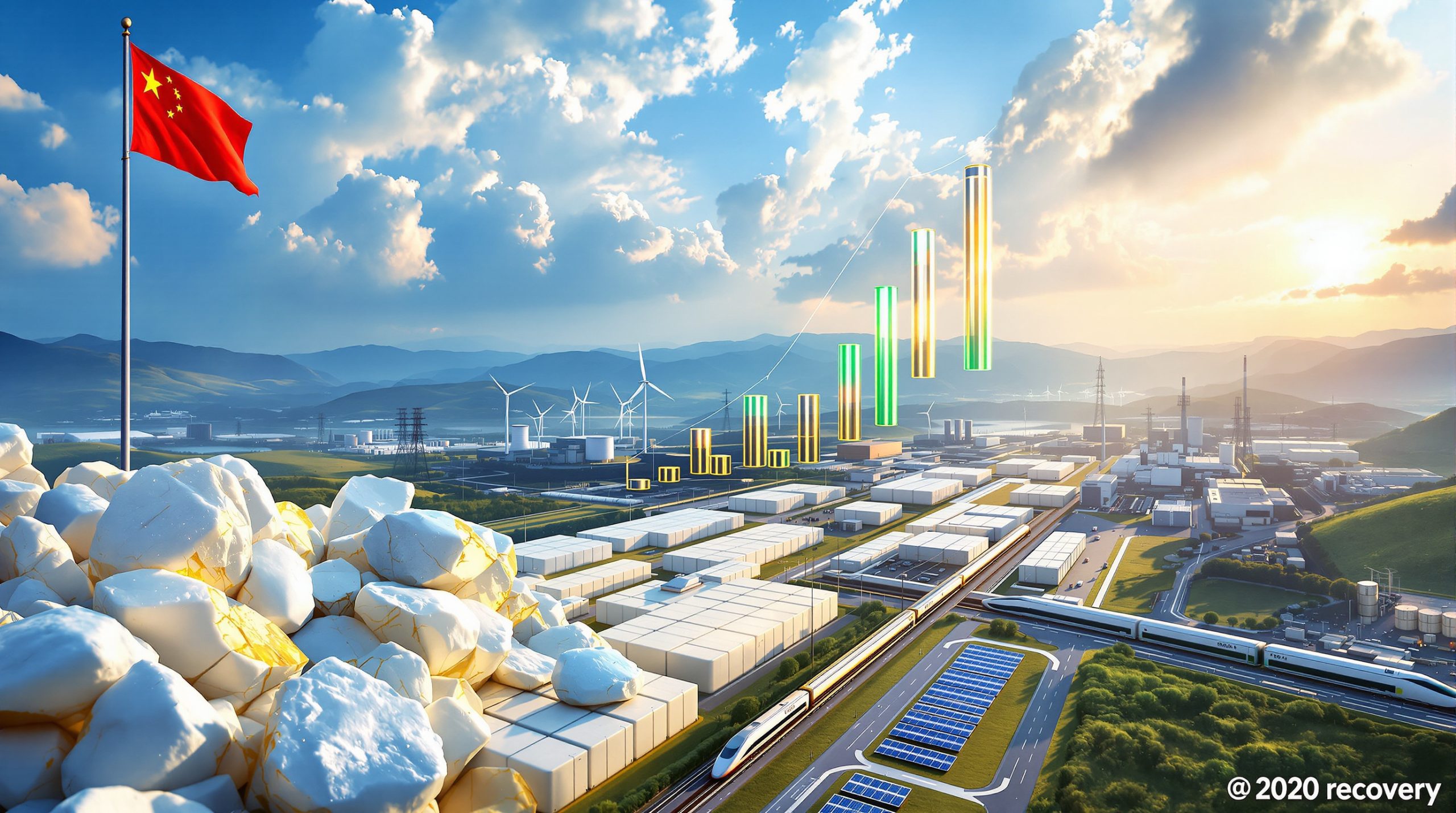What Caused the Recent COMEX Copper Price Surge?
The copper market witnessed an extraordinary event on July 8, 2025, when COMEX copper futures hit record highs amid US tariff policy disruptions, surging by a staggering 12.3% in a single trading session, reaching an unprecedented high of $12,330 per metric ton. This dramatic price movement sent shockwaves through global metal markets and represented one of the most significant single-day increases in copper trading history.
Understanding the July 2025 Price Rally
The catalyst behind this remarkable price action can be traced directly to ongoing uncertainty surrounding U.S. trade policy. In February 2025, the U.S. government initiated a formal investigation into potential tariffs affecting mining sector, creating significant market anxiety about future supply constraints in the American market.
"The extraordinary price movement we're witnessing is a classic example of how policy uncertainty can trigger massive market repositioning. When traders anticipate potential supply disruptions, price discovery becomes volatile and often disconnected from fundamental supply-demand balances," explains commodity strategist Maria Chen from Goldman Sachs.
This investigation, scheduled to conclude in November 2025, has effectively created a nine-month window of uncertainty during which market participants are scrambling to position themselves for possible outcomes. The single-day jump of 12.3% demonstrates how policy signals can trigger cascading effects in commodity markets, particularly for materials as economically critical as copper.
US Tariff Investigation Timeline
The timeline of the investigation has proven particularly impactful on market psychology:
- February 2025: Initial announcement of the investigation by the U.S. Trade Representative
- March-June 2025: Public comment period and preliminary findings
- July 2025: Mid-investigation market anxiety peaks with record price surge
- November 2025: Scheduled conclusion and final determination
Market analysts note that copper's unique position as both an industrial necessity and a barometer of economic health makes it particularly susceptible to policy-driven volatility. The metal's nickname as "Dr. Copper" stems from its ability to diagnose broader economic conditions due to its widespread use across multiple sectors.
How Are US Tariff Policies Reshaping Copper Markets?
The potential implementation of US tariffs global impact has created ripple effects throughout the global metals trading ecosystem, fundamentally altering trading patterns and price relationships between major exchanges.
The Growing COMEX-LME Price Differential
Perhaps the most telling indicator of market disruption is the unprecedented premium that has developed between COMEX copper prices and those on the London Metal Exchange (LME). This premium reached record levels following the July price surge, with COMEX contracts trading at a substantial premium to their LME counterparts.
"This record premium will inevitably attract more copper semi-finished products to flow into the U.S. market," notes SMM's market analysis team. "We're observing a fundamental rewiring of global copper trade flows in response to potential policy changes."
The price divergence between the world's two primary copper trading venues signals a fracturing of what has historically been a relatively unified global market. This premium effectively creates a two-tiered pricing structure:
- COMEX market: Reflecting U.S. domestic supply concerns and potential tariff impacts
- LME market: Representing broader global supply-demand dynamics
For traders and industrial users, this divergence creates both challenges and opportunities, as arbitrage potential increases while predictability decreases.
Strategic Objectives Behind US Copper Tariffs
The U.S. government's investigation into copper import tariffs appears strategically designed to achieve multiple policy objectives:
- Supply chain security: Reducing dependency on foreign copper sources
- Domestic capacity expansion: Encouraging investment in U.S.-based mining and processing
- Economic resilience: Strengthening national security through materials self-sufficiency
- Manufacturing revitalization: Supporting downstream industries with domestic material sources
The investigation reflects a broader shift toward resource nationalism and critical mineral security that has accelerated globally since 2020. For copper specifically, its essential role in renewable energy infrastructure, electric vehicles, and advanced electronics has elevated its strategic importance.
What Are the Market Implications of Record Copper Prices?
The ripple effects of record copper prices extend far beyond trading floors, with significant implications for global trade patterns and industries dependent on the red metal.
Predicted Trade Flow Adjustments
Market analysts anticipate that the substantial COMEX premium will redirect significant volumes of copper semi-finished products toward the U.S. market. This commercial magnetism could potentially create:
- Regional supply imbalances: Tighter availability in European and Asian markets
- Shipping pattern shifts: Rerouting of ocean freight carrying copper products
- Warehouse inventory fluctuations: Drawdowns in non-U.S. locations as material migrates
- Processing premium adjustments: Changes in fees charged by smelters and refiners
The complexity of these adjustments is compounded by shipping costs, logistics constraints, and the lead time required for physical delivery, creating a delayed but potentially significant reshaping of global copper flows.
Impact on Downstream Industries
The price surge creates cascading effects for industries dependent on copper inputs:
Electronics Manufacturing
- Circuit board production costs rising by an estimated 8-15%
- Component manufacturers facing margin compression
- Consumer electronics pricing pressures intensifying
Construction Sector
- Electrical wiring costs increasing substantially for new developments
- Plumbing material expenses affecting project viability
- Potential substitution toward aluminum in non-critical applications
Renewable Energy Projects
- Solar installation costs rising due to copper-intensive inverters and wiring
- Wind farm development economics challenged by higher materials costs
- Grid infrastructure expansion facing additional financial hurdles
Automotive Manufacturing
- Electric vehicle production costs particularly affected due to higher copper content
- Traditional vehicles seeing more modest but still significant cost increases
- Supply chain managers accelerating material efficiency initiatives
"The industries most exposed are those with limited ability to pass costs forward and high copper intensity in their products," notes industry analyst Jordan Martinez. "Electric vehicle manufacturers are particularly vulnerable, as they may need four times the copper of conventional vehicles while still working to achieve cost parity."
How Does This Compare to Historical Copper Market Disruptions?
The current copper market situation presents unique characteristics when examined against previous periods of market stress and volatility.
Previous Price Spike Patterns
While copper has experienced significant price volatility throughout its trading history, the current situation differs in several key aspects:
| Historical Event | Price Movement | Primary Driver | Duration |
|---|---|---|---|
| 2005-2008 Boom | +400% over 3 years | Chinese demand growth | Multi-year cycle |
| 2011 Peak ($10,190/mt) | Gradual climb to record | Post-financial crisis stimulus | 6-month buildup |
| 2016 Trump Election | +10% in one week | Infrastructure expectations | Short-lived |
| 2020 COVID Recovery | +80% in 8 months | Supply disruptions + stimulus | Sustained rally |
| 2025 Tariff Surge | +12.3% in one day | Policy uncertainty | Developing |
The 2025 situation stands out for its:
- Velocity: The unprecedented speed of the single-day move
- Policy trigger: Direct connection to governmental action rather than organic supply-demand factors
- Exchange divergence: The remarkable differential between major trading venues
- Geopolitical context: Occurring amid broader trade tensions and resource nationalism
Market Structural Changes Since 2020
The copper market has undergone substantial structural evolution since 2020, including:
- Energy transition acceleration: Copper demand projections increasingly tied to renewable deployment
- Supply constraint recognition: Growing awareness of limited mine development pipeline
- Geopolitical risk premium: Higher valuation of secure supply chains following pandemic disruptions
- Strategic stockpiling: Increased government-level inventory building for critical minerals
- Market fragmentation: Reduced fungibility between regional markets due to policy differences
These structural shifts have created a fundamentally different market environment compared to previous cycles, potentially suggesting that historical patterns may provide limited guidance for current market dynamics.
What Are Key Copper Production Developments in 2025?
The supply side of the copper market is experiencing significant developments that will influence market balances in the coming years.
Notable New Mining Projects
Several significant copper mining developments are influencing the 2025 market landscape:
Caiyuanzi Copper-Gold Mine
- Operator: Honglin Mining
- Timeline: Trial production beginning between July and September 2025
- Significance: Represents one of several Chinese-backed projects advancing despite market volatility
Daoshi Technology's Hydrometallurgy Smelter
- Investment: $165 million capital expenditure
- Capacity: 30,000-ton annual production of copper cathode
- Technology: Advanced hydrometallurgy processing, reducing environmental footprint compared to traditional pyrometallurgical methods
These projects illustrate the ongoing capacity expansion efforts that continue despite market uncertainty. The Daoshi Technology investment is particularly notable for its use of hydrometallurgy, which typically uses acid leaching and electrowinning to produce copper rather than traditional smelting, resulting in potentially lower emissions but requiring specific ore types.
Regional Production Shifts
The global distribution of copper production continues to evolve, with:
- Indonesian expansion: Rapid growth in processing capacity following export restrictions on unprocessed minerals
- Chinese producer challenges: Navigating complex domestic environmental regulations while maintaining output
- North American revitalization efforts: US copper investment insight driving projects advancing in Arizona, Nevada, and various Canadian provinces
- Chilean production pressures: Water constraints and declining ore grades at mature operations
The geographic diversification of production represents an important counterbalance to market fears about supply concentration. However, new projects face increasingly complex permitting processes, rising capital costs, and growing community engagement requirements.
How Are Other Metals Markets Responding?
The copper price surge has not occurred in isolation, with interconnected movements across the broader metals complex revealing important market dynamics.
Correlated Price Movements
The copper price surge has coincided with significant movements in other metal markets:
- Base metals mixed performance: LME zinc, alumina, and coking coal showing gains exceeding 1% while LME nickel experienced downward pressure despite the broader uptrend
- Precious metals response: Gold and silver benefiting from dollar weakness that accompanied the copper move
- Minor metals divergence: Cobalt and molybdenum displaying limited correlation to the copper surge
These varying responses highlight the complex interrelationships between different metal markets and their sometimes distinctive fundamental drivers. While industrial metals often move together during broad economic shifts, policy-specific actions like potential copper tariffs can create more nuanced market reactions.
Lithium Market Contrasts
While copper prices reach record highs, the lithium market presents a contrasting scenario:
- Oversupply concerns: Major producer Ganfeng expressing worries about lithium price sustainability
- Project economics: Questions emerging about the viability of multiple lithium developments at current price levels
- Demand uncertainty: Electric vehicle sales growth projections becoming more varied across regions
"Current lithium prices may not be sustainable," warned Ganfeng in a recent market statement, highlighting the divergent fundamentals between battery metals and traditional industrial metals.
This stark contrast between copper and lithium markets underscores how even metals that share exposure to similar end-use sectors (like electric vehicles) can experience markedly different market conditions based on their unique supply-demand fundamentals.
What Should Investors and Industry Participants Monitor?
Given the unprecedented market conditions, stakeholders across the copper value chain must maintain vigilance on several key indicators.
Key Market Indicators
Those with exposure to copper markets should closely track:
- U.S. tariff investigation developments: Official statements, industry testimony, and policy signals
- COMEX-LME price differential evolution: Widening or narrowing of the unprecedented premium
- Physical delivery premiums: Spot market conditions in key consumption regions like Shanghai, Rotterdam, and Chicago
- Warehouse inventory movements: Changes in official exchange stockpiles and bonded warehouses
- Production disruption reports: Labor actions, weather events, or technical issues at major mining operations
These indicators provide early warning signs of further market disruptions or potential stabilization. Particular attention should be paid to physical market premiums, which often signal real supply constraints before they appear in futures markets.
Strategic Response Options
Industry participants may consider several strategic responses:
For Copper Consumers:
- Hedging implementation: Utilizing futures contracts to lock in prices despite increased volatility
- Inventory management: Strategic building of physical stocks during price dips
- Supplier diversification: Reducing dependency on single-source regions
- Product redesign: Exploring copper-efficient alternatives or substitution where technically feasible
For Producers and Traders:
- Regional marketing adjustments: Redirecting material to premium markets while managing logistics costs
- Contract restructuring: Implementing more flexible pricing mechanisms in long-term agreements
- Operational optimization: Maximizing production during high-price environments
- Investment timing: Accelerating or delaying capacity expansions based on copper price prediction insights
The elevated market volatility increases the value of optionality in business strategies, favoring approaches that maintain flexibility while providing some protection against extreme outcomes.
FAQs About the Copper Market Situation
What is driving the record high COMEX copper prices?
The unprecedented surge in COMEX copper futures hit record highs amid US tariff policy disruptions, stemming primarily from market uncertainty created by a U.S. government investigation into potential tariffs on copper imports. This investigation, launched in February 2025 and scheduled to conclude in November 2025, has created significant speculation about future supply constraints in the American market, driving prices to record levels.
How significant is the 12% single-day price increase?
A 12% single-day increase represents exceptional volatility in the copper market. For context, daily price movements typically range between 1-3% even during periods of significant market stress. This movement ranks among the largest one-day percentage gains in the history of COMEX copper trading, underscoring the extraordinary nature of current market conditions.
Why is there a growing price differential between COMEX and LME copper?
The price differential reflects market expectations that U.S. tariffs would create artificial scarcity in the domestic market, driving COMEX prices higher while global prices represented by LME remain relatively lower. This spread incentivizes the movement of physical copper toward the U.S. market while creating arbitrage opportunities for sophisticated traders who can navigate the logistics and regulatory complexities.
How might this affect copper-dependent industries?
Industries reliant on copper inputs will likely face increased production costs, potential supply constraints, and pressure to pass costs to consumers or find material substitutions where technically feasible. The impact will be most acute for copper-intensive products like electric vehicles, renewable energy equipment, and advanced electronics. Companies with global supply chains may experience regional cost variations based on local copper pricing.
What are the longer-term implications for global copper trade?
The situation could accelerate regionalization of metal markets, incentivize new mining investment in tariff-exempt regions, and potentially reshape traditional trading relationships and supply chains. If tariffs are implemented, we may see increased investment in U.S. domestic copper production and processing capabilities, along with shifts in international trade patterns as material flows adjust to the new price realities.
The current market dynamics also highlight the growing importance of gold & copper exploration importance in securing future supply chains amid increasing geopolitical tensions and resource competition.
Wondering How to Capitalise on the Next Major Metal Price Surge?
Stay ahead of market-moving events like the recent copper price rally with Discovery Alert's proprietary Discovery IQ model, delivering real-time notifications on significant ASX mineral discoveries and market opportunities. Explore how major mineral discoveries can lead to substantial returns by visiting Discovery Alert's dedicated discoveries page and position yourself for the next market opportunity.




